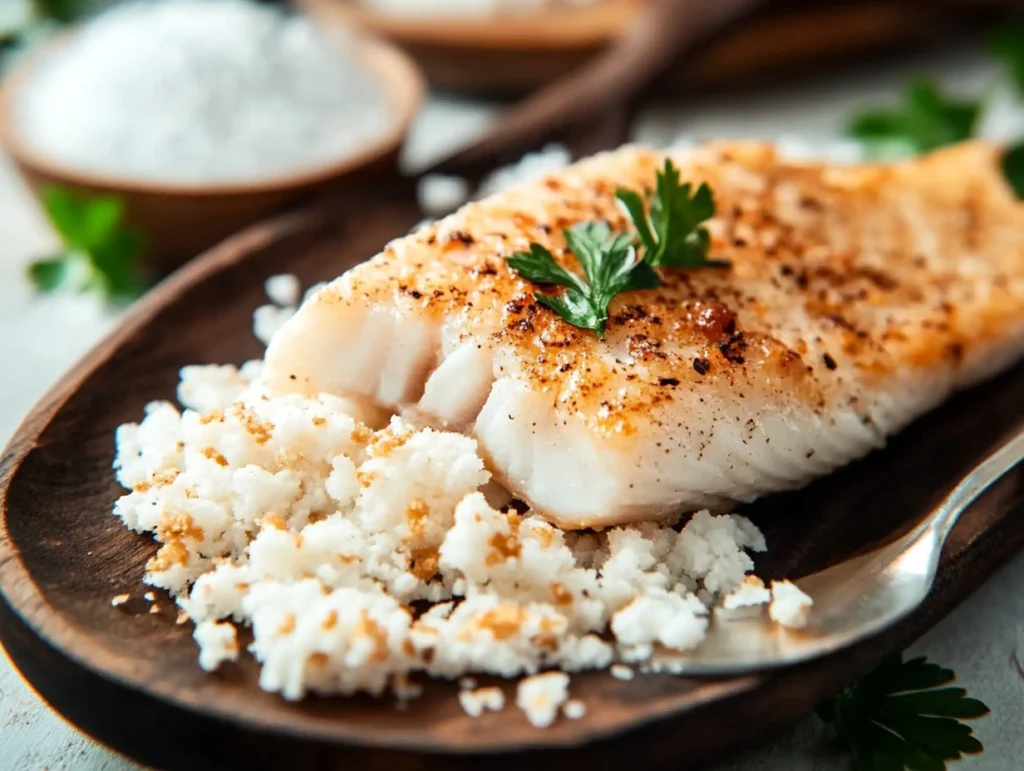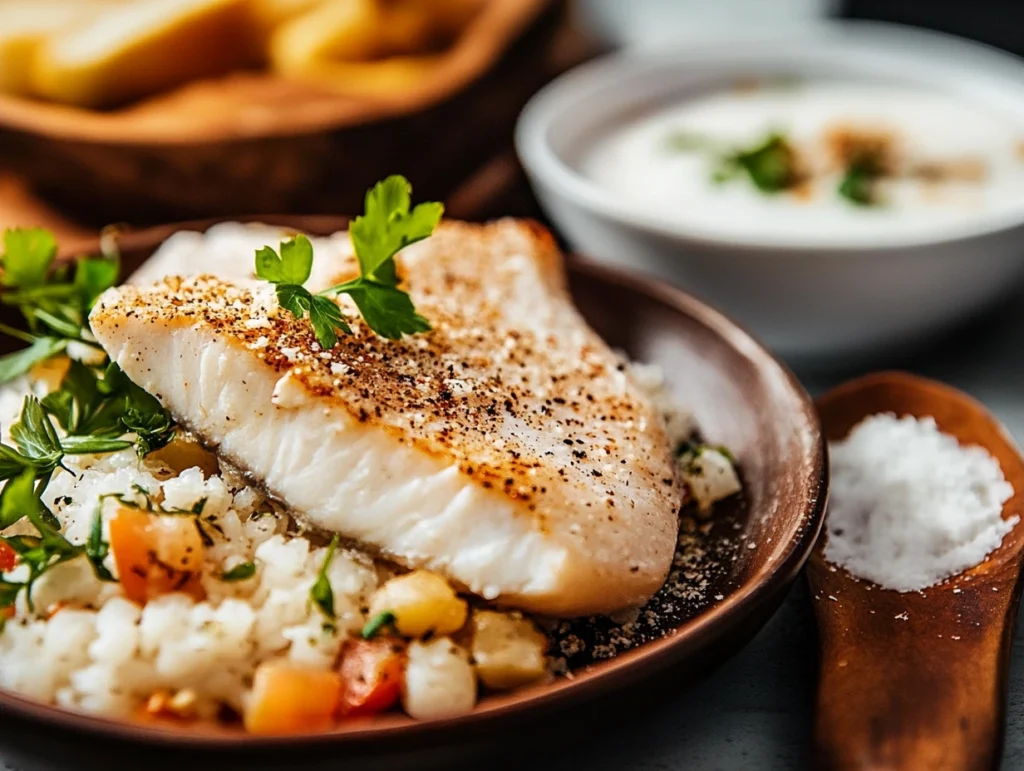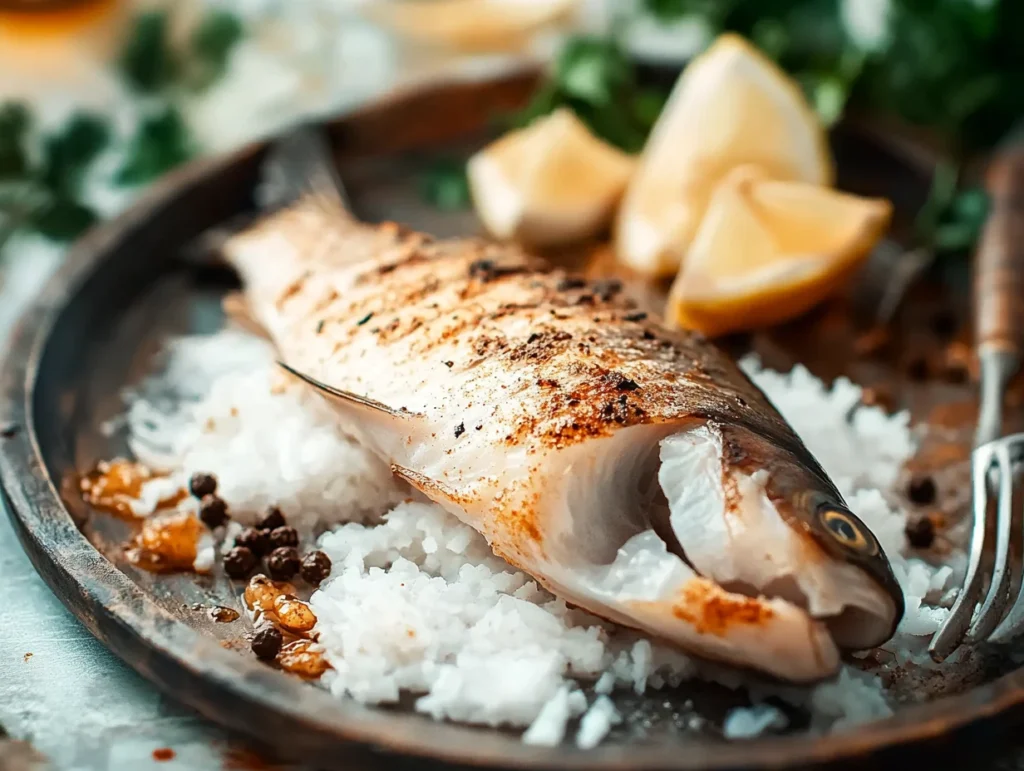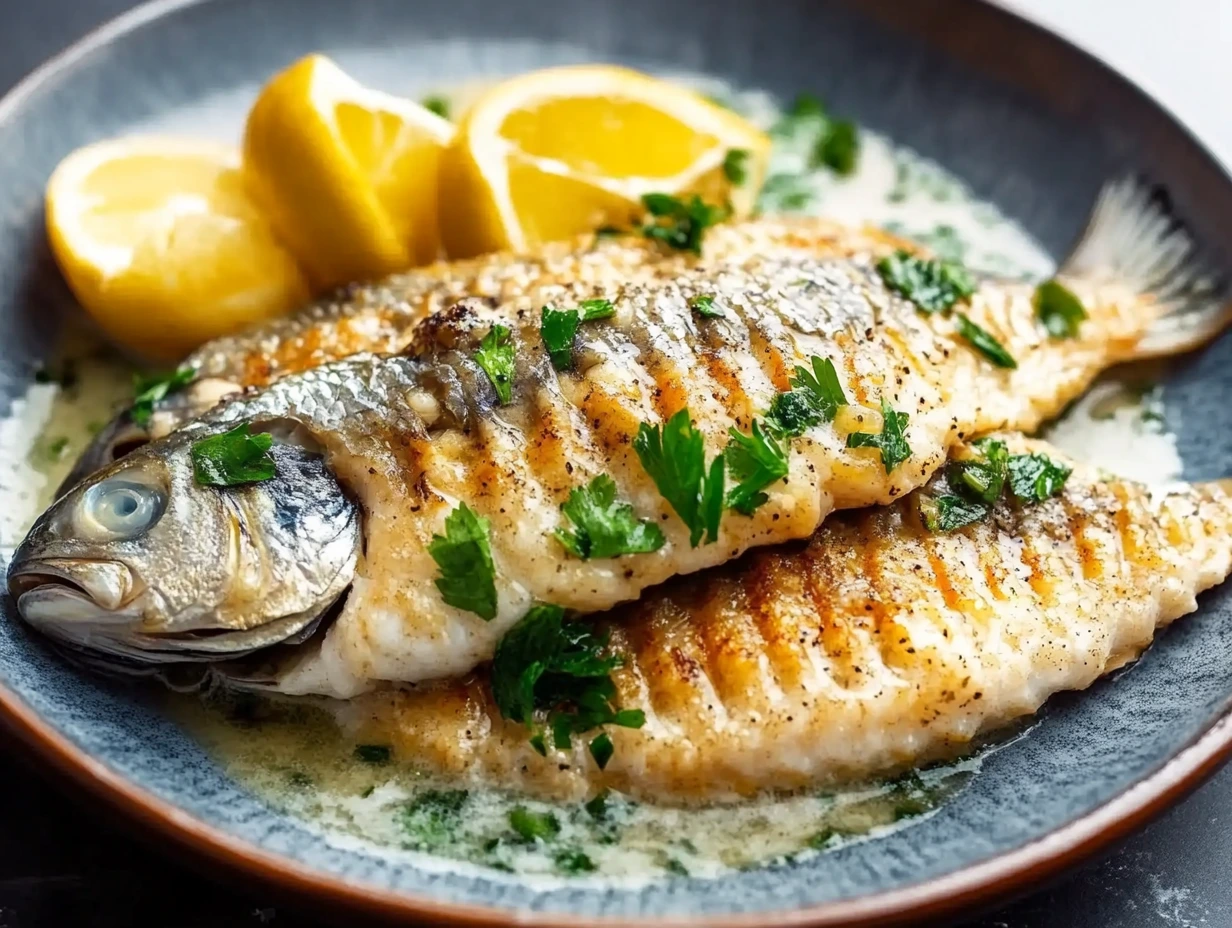Creating homemade fish food recipe allows you to control the ingredients, ensuring your fish receive high-quality nutrients without unnecessary fillers or preservatives. It also provides an opportunity to cater to the specific needs of your fish, whether they are herbivores, carnivores, or omnivores. With the right recipe, you can enhance their coloration, boost immunity, and improve overall vitality.

Table of Contents
Why Choose Homemade Over Store-Bought?
1. Customization
Homemade fish food can be tailored to the dietary requirements of different species. This customization ensures your fish receive a balanced diet with all essential nutrients.
2. Quality Control
By preparing fish food at home, you can ensure the use of fresh, high-quality ingredients. This eliminates the risk of introducing low-grade or harmful substances often found in some commercial options.
3. Cost-Effective
In the long run, making fish food at home can save money, especially if you have multiple fish or large aquariums.
4. Eco-Friendly
Homemade fish food reduces packaging waste associated with commercial products, making it a more sustainable choice.
Ingredients
Essential Ingredients
The base ingredients of your fish food depend on the type of fish you keep. Below are some common options:
- For Herbivores:
- Vegetables: Spinach, lettuce, peas, zucchini, and carrots.
- Algae: Spirulina powder or fresh algae from your aquarium.
- For Carnivores:
- Protein Sources: Shrimp, fish fillets, bloodworms, and brine shrimp.
- For Omnivores:
- A mix of plant-based ingredients and proteins, like fish fillets blended with vegetables.
Nutritional Additives
To enhance the nutritional profile of your homemade fish food, consider adding:
- Vitamins: Vitamin C and Vitamin D for immune system support and bone health.
- Minerals: Calcium for strong bones and scales.
- Probiotics: Beneficial bacteria to promote gut health.
- Gelatin or Agar: As a binder to hold the ingredients together.
- Color Enhancers: Ingredients like paprika or marigold petals to naturally boost fish coloration.
Tools and Equipment
Creating homemade fish food requires a few basic tools that are likely already in your kitchen. Using the right equipment ensures the process is efficient and the food is prepared safely.
Must-Have Tools
- Blender or Food Processor:
To finely chop and mix the ingredients for a smooth, uniform consistency. - Cutting Board and Knife:
For preparing vegetables and proteins before blending. - Measuring Cups and Spoons:
To ensure precise portions of ingredients and additives. - Mixing Bowls:
For combining ingredients before blending. - Cooking Pot or Steamer:
To lightly cook certain ingredients, such as vegetables or proteins, for easier digestion. - Freezer-Safe Containers or Ice Cube Trays:
For storing the prepared fish food in manageable portions. - Fine Mesh Strainer or Cheesecloth (optional):
Useful for draining excess liquid from blended mixtures.
Substitutions for Tools
If you lack certain tools, here are some alternatives:
- Blender/Processor Substitute: Use a mortar and pestle or finely chop ingredients with a knife for smaller batches.
- Ice Cube Trays Substitute: Use small ziplock bags or flatten the mixture on a tray and break it into pieces after freezing.
- Cooking Pot Substitute: Steam vegetables using a microwave and a microwave-safe container with a lid.

Step-by-Step Guide
Now that you have your tools and ingredients ready, follow these steps to prepare homemade fish food.
Preparing the Ingredients
- Select Ingredients Based on Fish Type:
Choose proteins, vegetables, or a mix depending on whether your fish are herbivores, carnivores, or omnivores. - Wash and Clean:
Rinse vegetables and proteins thoroughly to remove dirt, pesticides, or impurities. - Lightly Cook (if necessary):
Steam or blanch vegetables to soften them, making them easier for fish to digest. Cook proteins like shrimp or fish fillets briefly if they are raw. - Chop into Small Pieces:
Cut all ingredients into smaller pieces to ensure easy blending and even distribution of nutrients.
Blending and Mixing
- Blend Ingredients:
Add prepared ingredients to the blender or food processor. Blend until smooth or leave some texture depending on the preference of your fish species. - Add Nutritional Additives:
Mix in vitamins, minerals, or other supplements during blending for a balanced diet. - Bind with Gelatin or Agar:
Dissolve gelatin or agar according to package instructions. Mix it into the blended ingredients to help form the mixture into a solid mass.
Shaping and Storing
- Shape the Mixture:
Pour the blended mixture into ice cube trays for small, easy-to-feed portions. Alternatively, spread it on a baking sheet to create a thin layer. - Freeze the Food:
Place the trays or sheets in the freezer for several hours until solid. This ensures freshness and prevents spoilage. - Store Properly:
Transfer frozen portions to airtight, freezer-safe containers or bags. Label them with the date to track freshness. - Feeding:
When feeding, take out a portion and let it thaw slightly before offering it to your fish.
Types of Fish Food
Different types of fish food cater to the unique preferences and feeding habits of various fish species. Understanding these options can help you decide the best form for your homemade fish food.
Flakes
- Description:
Flake food is thin, flat, and easy to crumble. It floats on the water surface, making it suitable for surface-feeding fish. - Best For:
Small fish, surface feeders, and species with small mouths like guppies, tetras, and bettas. - Preparation:
Homemade flakes can be created by dehydrating or baking a blended mixture until crisp, then breaking it into small pieces.
Pellets
- Description:
Pellets are small, compact pieces of food that come in floating or sinking varieties, depending on the feeding behavior of your fish. - Best For:
Larger fish and bottom feeders, such as cichlids, catfish, and goldfish. - Preparation:
Shape the fish food mixture into small, rounded pellets before drying or freezing.
Gels
- Description:
Gel food is soft and easy to consume, making it an excellent option for fish that struggle with harder food forms. - Best For:
Fry (baby fish), delicate fish species, or those with sensitive digestive systems. - Preparation:
Use gelatin or agar as a binder to form the food into a soft, moldable consistency that holds together underwater.
Nutritional Guidelines
Providing a balanced diet is critical for the health, growth, and longevity of your fish. Below are some key nutritional considerations.
Understanding Protein Requirements
- Importance of Protein:
Protein is essential for growth and repair. Its percentage in the diet depends on the fish’s species and age. - Protein Needs by Type:
- Carnivorous Fish: Require a high protein diet (40%-70%). Examples include bettas and Oscars.
- Omnivorous Fish: Need a moderate protein diet (30%-50%). Examples include goldfish and guppies.
- Herbivorous Fish: Thrive on a lower protein diet (20%-30%), relying more on plant-based ingredients. Examples include plecos and mollies.
- Protein Sources:
Shrimp, fish fillets, bloodworms, and spirulina are excellent protein sources for homemade fish food.
Balancing Fats and Carbohydrates
- Fats:
Fats provide energy and are essential for the absorption of fat-soluble vitamins. Fish diets should contain 5%-10% fat.- Sources: Fish oil, cod liver oil, or small amounts of plant oils like flaxseed oil.
- Carbohydrates:
Carbs are a secondary energy source but should not dominate the diet, especially for carnivorous fish.- Sources: Vegetables like peas, spinach, and zucchini provide easily digestible carbohydrates for herbivorous and omnivorous fish.
Special Diets for Fish
Fish have varying dietary needs based on their species and natural feeding habits. Understanding these differences is crucial when preparing homemade fish food.
Herbivorous Fish Diet
- Diet Requirements:
Herbivorous fish primarily consume plant-based materials such as algae, vegetables, and fruits. Their diet should be high in fiber and contain minimal protein. - Key Ingredients:
- Vegetables: Spinach, kale, peas, zucchini, and carrots.
- Algae: Spirulina or fresh algae.
- Fruits: Small amounts of cucumber or melon.
- Feeding Tips:
Ensure vegetables are steamed or blanched for easy digestion. Avoid overfeeding to prevent tank contamination.
Carnivorous Fish Diet
- Diet Requirements:
Carnivorous fish rely on high-protein diets consisting of animal-based ingredients. Protein aids in their growth and sustains their active lifestyles. - Key Ingredients:
- Proteins: Shrimp, fish fillets, bloodworms, krill, and brine shrimp.
- Supplements: Vitamin-enriched additives for added nutrition.
- Feeding Tips:
Protein-based food should be fresh and free from contaminants. Avoid overfeeding as uneaten protein can quickly spoil water quality.
Omnivorous Fish Diet
- Diet Requirements:
Omnivorous fish thrive on a balanced mix of plant-based and protein-rich ingredients. - Key Ingredients:
- Vegetables: Peas, spinach, and carrots.
- Proteins: Shrimp, fish fillets, and small amounts of bloodworms.
- Supplements: Spirulina or other plant-based additives.
- Feeding Tips:
Balance the portions of plant and animal-based food according to the species.

Cooking Techniques
Preparing homemade fish food involves techniques that preserve nutrients and enhance shelf life. Here are some common methods:
Baking
- Purpose:
Baking is ideal for creating flakes or small, firm pellets. - How-To:
- Spread the blended food mixture onto a baking sheet lined with parchment paper.
- Bake at a low temperature (around 150°F or 65°C) for several hours until completely dry.
- Break into small pieces or crush into flakes.
- Tips:
Keep the temperature low to preserve nutrients and prevent burning.
Dehydrating
- Purpose:
Dehydrating is a gentle method that removes moisture while retaining most nutrients. - How-To:
- Spread the food mixture thinly on dehydrator trays.
- Set the dehydrator to a low heat setting and leave for 6-12 hours, depending on thickness.
- Store the dried food in an airtight container.
- Tips:
Ensure the mixture is evenly spread to avoid uneven drying.
Freezing
- Purpose:
Freezing locks in nutrients and is suitable for gel-based or soft foods. - How-To:
- Pour the prepared mixture into ice cube trays or mold into small portions.
- Freeze until solid.
- Transfer to freezer-safe bags or containers for storage.
- Tips:
Label the containers with the preparation date to monitor freshness.
Frequently Asked Questions (FAQs)
What is the best protein source for fish?
The best protein sources depend on the dietary needs of your fish:
- Carnivorous Fish: Shrimp, bloodworms, brine shrimp, fish fillets, and krill are excellent options.
- Omnivorous Fish: A combination of the above protein sources along with plant-based ingredients like spirulina.
- Herbivorous Fish: While they require less protein, spirulina or algae can provide necessary protein in small amounts.
Can I use human food for fish?
Yes, but with caution. Not all human foods are safe or suitable for fish. For example:
- Safe Foods: Blanched vegetables (spinach, peas, zucchini), unseasoned seafood, and fruits in moderation.
- Avoid: Processed, salted, or spiced foods, dairy products, and foods high in fat or sugar. Always ensure the food is fresh and free of harmful additives.
How often should I feed homemade food?
Feeding frequency depends on the fish species and their size:
- General Rule: Feed 1-2 times per day in small quantities they can consume in 2-3 minutes.
- Juveniles and Fry: May require more frequent feedings (3-4 times daily) in smaller portions.
Is freezing fish food safe?
Yes, freezing is one of the safest and most effective ways to preserve homemade fish food. It:
- Locks in nutrients.
- Prevents spoilage.
- Extends the food’s shelf life (up to 6 months).
What are the signs of malnutrition in fish?
Signs of malnutrition include:
- Physical Symptoms: Sunken belly, weight loss, faded coloration, frayed fins.
- Behavioral Changes: Lethargy, reduced appetite, abnormal swimming patterns.
- Health Issues: Increased susceptibility to diseases or infections.
How do I know if my fish like it?
Fish will show clear signs if they enjoy the food:
- Active Feeding: They eagerly eat the food without hesitation.
- No Leftovers: Little to no food is left uneaten.
- Improved Appearance: Vibrant colors, healthy scales, and steady growth indicate satisfaction with the diet.
When crafting homemade fish food, consider incorporating fresh fish for optimal nutrition. For example, ideas from the Homemade Fish Sticks Recipe can inspire protein-rich meals for carnivorous fish, while the Fish Stick Tacos Recipe offers creative ways to repurpose ingredients. Additionally, drawing inspiration from the Easy Fish Cakes Recipe can help refine blending techniques. For human-friendly options, the Fish Sandwich Recipe demonstrates how fish can be seamlessly included in everyday cooking.
Conclusion
Providing your fish with homemade food is a rewarding way to ensure their health, vitality, and longevity. By customizing recipes based on their dietary needs, you can deliver a well-balanced and nutrient-rich diet that meets the specific requirements of herbivorous, carnivorous, and omnivorous fish. With the use of simple tools and cooking techniques like baking, dehydrating, and freezing, creating homemade fish food becomes a manageable and cost-effective alternative to store-bought options.

